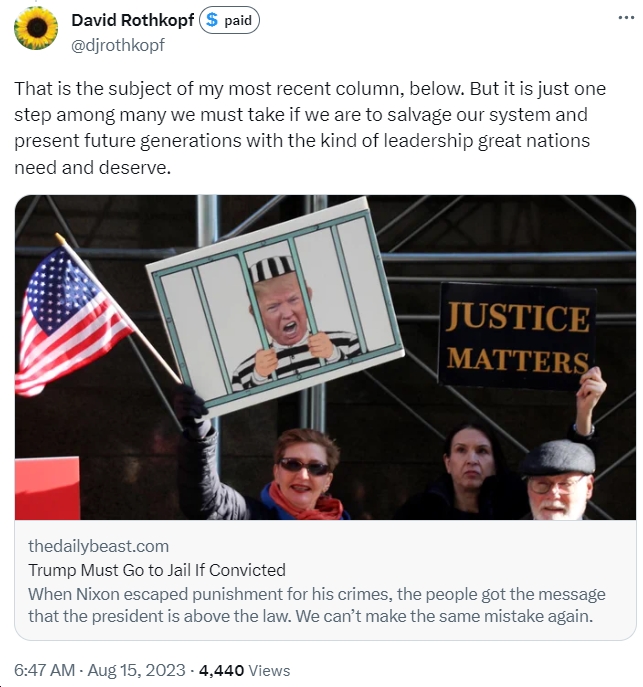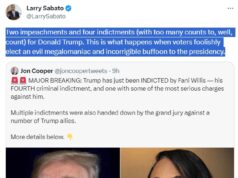The following letter is from Paul Goldman to the Virginia Department of Elections, arguing that the redistricting amendment referendum is unconstitutional and “misleading” in a variety of ways, and writes, “Accordingly, myself and my Fair Referendum committee are hoping the 1998 blueprint can again resolve the matter without needing a Court Order.”
3 August 2020
Commissioner Christopher Piper
Deputy Commissioner Jessica Bowman
Commissioner
Virginia Department of Elections
Washington Building
1100 Bank Street, First Floor
Richmond, VA 23219
BY EMAIL.
Dear Commissioner:
I believe this letter – which calls on the Department and/or the State Board to act as permitted by law – speaks for all Virginians who support the people’s right to cast an informed Referendum vote. As you know, the General Assembly has placed a Referendum question for approval or disapproval on the November ballot. In Virginia, by the command of Article I, Section 2 of the Constitution of Virginia, the people, not the politicians, are sovereign. The subject matter of the ballot question is the proposed substantive changes to Article II, Section 6 and furthermore, the proposed addition of a new Article II, Section 6-A. Article XII, Section 1 gave the General Assembly the option of putting the entire text of the proposed changes and additions on the ballot. Our lawmakers chose instead to put a brief description of their handiwork on the ballot. There will of course be the statutorily required “explanation” pamphlet available to voters along with various postings of the textual proposals. However, the Courts, by common sense understanding of how the elective process works, have long ago recognized that most voters will not focus on these proposals until at the point of seeing the ballot language as they prepare to cast their vote.
My analysis below demonstrates, to any objective reviewer, the misleading language of the ballot question as a matter of constitutional law. In 1998, I had occasion to bring to the attention of the appropriate state elected and appointed officials an unconstitutional action of the General Assembly. After some resistance, the State Comptroller and the Attorney General agreed with my analysis. They moved to get the Speaker of the House and State Senate leaders to rescind the General Assembly’s unconstitutional pay rise. A few months later, the pay raise was rescinded without having to get a Court Order.
Twenty-two years later, we have another instance of an unconstitutional General Assembly action. Accordingly, myself and my Fair Referendum committee are hoping the 1998 blueprint can again resolve the matter without needing a Court Order.
Pursuant to Virginia Code Section 24.2-103A, the “State Board, through the Department of Elections” is given power to ensure “that elections are conducted as provided by law.” This supervision of our election process “shall ensure” the “uniformity, legality and purity” of the “election.” Indeed, the “State Board” has the right to “petition a circuit court or the Supreme Court, whichever is appropriate,” if necessary, for certain matters.
The ballot language chosen by the General Assembly reads as follows:
“Question: Should the Constitution of Virginia be amended to establish a redistricting commission, consisting of eight members of the General Assembly and eight citizens of the Commonwealth, that is responsible for drawing the congressional and state legislative districts that will be subsequently voted on, but not changed by, the General Assembly and enacted without the Governor’s involvement and to give the responsibility of drawing the districts to the Supreme Court of Virginia if the redistricting commission fails to draw districts or the General Assembly fails to enact districts by certain deadlines?”
The ballot language is deficient in at least the following ways.
1. THE BALLOT LANGUAGE FAILS TO DISCUSS THE SUBSTANTIVE CHANGES TO ARTICLE II, SECTION 6. The relevant wording of the proposed changes read as follows: “Every electoral district shall be drawn in accordance with the requirements of federal and state laws that address racial fairness, including the Equal Protection Clause of the Fourteenth Amendment to the Constitution of the United States and provisions of the Voting Rights Act of 1965, as amended, and judicial decisions interpreting such laws. Districts shall provide, where practicable, opportunities for racial and ethnic communities to elect candidates of their choice.” Self-evidentially, the ballot question language fails to mention any of this.
2. HAVING LEGISLATORS ON THE REDISTRICTING COMMISSION MAY VIOLATE THE “SEPARATION OF POWERS” DOCTRINE. As a constitutional matter, this principle is enshrined in Article I, Section 5 of the Constitution of Virginia. Eight current General Assembly members will be on the proposed Redistricting Commission, half the membership. These 8 members will therefore first get to vote on what the Commission proposes. If passed, then they will get to vote again as members of the Legislative branch. This raises a “separation of powers” issue since the doctrine is premised on the principle that no elected official should wield power for two separate government entities. The precise nature of the proposed Redistricting Commission in that regard is admittedly murky. But this highlights the constitutional question.
3. THE BALLOT LANGUAGE MAKES NO REFERENCE TO THE NEEDED SUPERMAJORITY. Currently, a majority vote of the General Assembly enacts the required decennial redistricting maps. But under the proposed new Article II, Section 6-A, there will be a new, unprecedented redistricting math. It will take a supermajority of the Commission to act. Indeed, 3 sitting legislators of either party can block a redistricting plan favored by all 8 citizens and the other 5 legislators. The failure of the ballot language to alert voters is constitutionally troubling.
4. THE BALLOT LANGUAGE DOESN’T PROVIDE THE QUALIFICATIONS OF THE “CITIZEN” MEMBERS. By design, Article II, Section 6-A leaves defining the qualification criteria to a future act of the General Assembly. The unsuspecting voter will likely assume a “citizen” member will not be a political partisan beholden to the General Assembly. But there is no guarantee of even “one” independent citizen member.
5. THE BALLOT LANGUAGE DOESN’T PROVIDE ANY DETAILS ON HOW AN INDIVIDUAL GETS ON THE REQUIRED LIST TO BE CHOSEN AS A “CITIZEN” MEMBER. The proposed constitutional language makes clear all 8 “citizens” come from lists compiled by political leaders of each major party in the General Assembly. Accordingly, the Constitutional Amendment would allow the partisan forces in the General Assembly to dictate that the 8 “citizen” members are, for example, active party members. The unsuspecting voter will have no reason to suspect this given the ballot language.
6. THE BALLOT LANGUAGE DOESN’T PROVIDE ANY DETAILS AS TO HOW THE “CITIZEN” MEMBERS ARE CHOSEN. In my reading of the cases on redistricting, the method of choosing the citizen members is considered important information for the voters to know. The ballot provides no such information, by design.
7. THE BALLOT LANGUAGE IS MISLEADING AS TO THE ROLE OF THE JUDICIARY. The ballot question says, “the responsibility of drawing the districts to the Supreme Court of Virginia if the redistricting commission fails to draw districts or the General Assembly fails to enact districts by certain deadlines?” The General Assembly knows that in a Southern state, redistricting maps inevitably require the approval of the United States Department of Justice and the federal courts, often the U.S. Supreme Court. This is not mentioned in the ballot language. At first blush this was troubling but not overly so. But then I remembered: the ballot language intentionally omits any reference to the changes proposed for Article II, Section 6 which likewise reference federal legislation and case law. As Yogi Berra famously observed, some things are too coincidental to be a coincidence.
CONCLUSION: Whatever the merits of these General Assembly proposals, the ends can never justify the means. In my view, several of the 7 points above standing alone would render the ballot language a misleading referendum as a matter of constitutional law. Some may disagree. But any objective reviewer taking all 7 points into consideration must surely find the ballot language creates a misleading referendum as a matter of constitutional law.
The General Assembly will fortunately be returning to town in a few weeks for a Special Session. I am quite certain our legislators will quickly agree to fix the misleading language if the appropriate state elected and appointed officials follow the example set in 1998.
If one genuinely believes in the right of citizens to an informed, transparent vote, then there is no legitimate reason not to fix misleading ballot question language.
Sincerely,
Paul Goldman













![Video: Sen. Tim Kaine on “Meet the Press” Says DoJ Not Complying with the Law on Release of ALL the Epstein Files, But Argues “I think [impeachment/contempt for DoJ officials is] premature”](https://bluevirginia.us/wp-content/uploads/2025/12/kainemtp1221-100x75.jpg)

![Video: Rep. James Walkinshaw (D-VA11) Says “It’s enormously frustrating,” as “the law is clear…the full files were supposed to be released [yesterday] and the Trump administration is not in compliance with that law”](https://bluevirginia.us/wp-content/uploads/2025/12/walk1219-100x75.jpg)